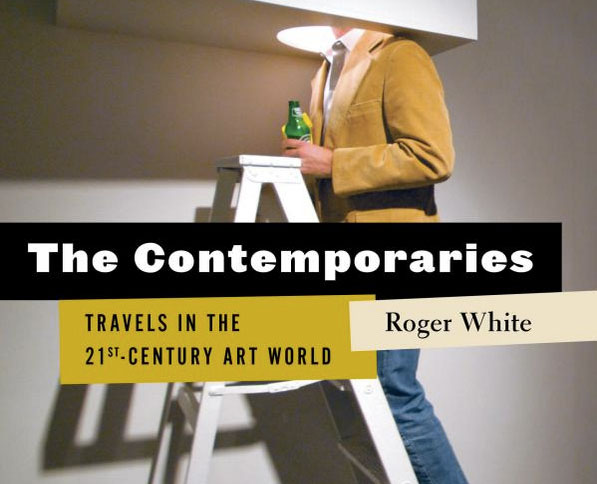
I’m only a few pages into Roger White’s The Contemporaries, and I’ve already decided it’s incredible. The book examines art in terms of why it gets made, how we evaluate it, and what that means for the legacy of today’s artists. I’ll be writing a full review of the book next week, but in light of all the art viewing we’ll be doing at the fairs, a discussion of where art takes us seems timely.
Roger White’s writing has a dry, deadpan humor to it. The first 20 pages is all accounts of group critiques at RISD. Here is an excerpt from a studio visit with the artist mentioned above, who White simply refers to as “Claudia”:
“Everyone, if you can turn off your cell phones,” Claudia said while ushering us to our seats. On the wall opposite the projections were two five-by-five-foot paintings lit by tungsten floodlights on stands: one was a white circle with gray polka dots, the other was a pink field with lighter pink stripes.
Claudia pressed a few keys on a laptop and one screen came to life, shouting ominously rolling thunderclouds, a dramatic soundtrack of shrilling, synthetic chords, and then Claudia in a tight black top, skirt, and high heels, flanked by two female dancers. While the clouds rolled smoothly across the screen, the figures vamped for the camera in jerky stop-motion. The music crescendoed, a beat kicked in, and the other screen displayed a wall of flame lashing against a black ground, and then Claudia again, in extreme slow motion, wrestling with a man in a white wife-beater who was trying to pin her in an embrace. This went on for eight minutes, and then both videos ended abruptly, one a few seconds before the other.
David Frazer started the discussion with a barrage of questions: Was the ending meant to be so choppy? Was this a finished piece? Why were the paintings lit that way?
Claudia, who is from Chile and once impersonated Britney Spears on a reality TV show there, said that the paintings were derived from the backgrounds of album covers: the circle with polka dots was from Mi Reflejo by Christina Aguilera; the pink stripes came from a German mashup of Coldplay and Nicki Minaj. The lights were meant to suggest a photo shoot. Yes, the video piece was finished; yes the ending was meant to be abrupt. “I wanted it to be very painful to look at.”
Kevin Zucker said, “I’m concerned about where the pain takes us.”
Buy this book.


Comments on this entry are closed.